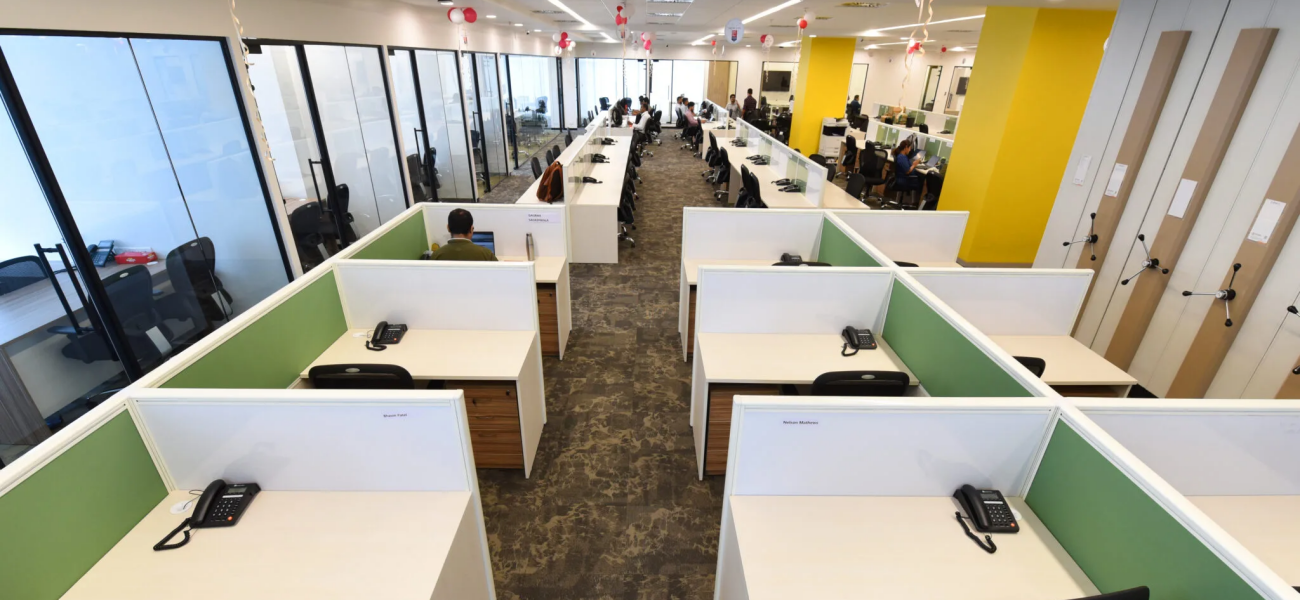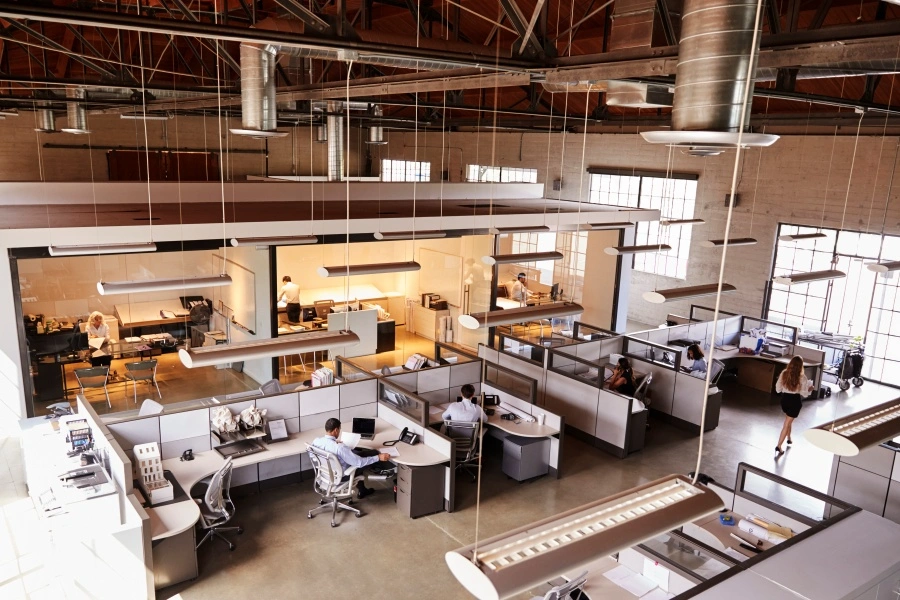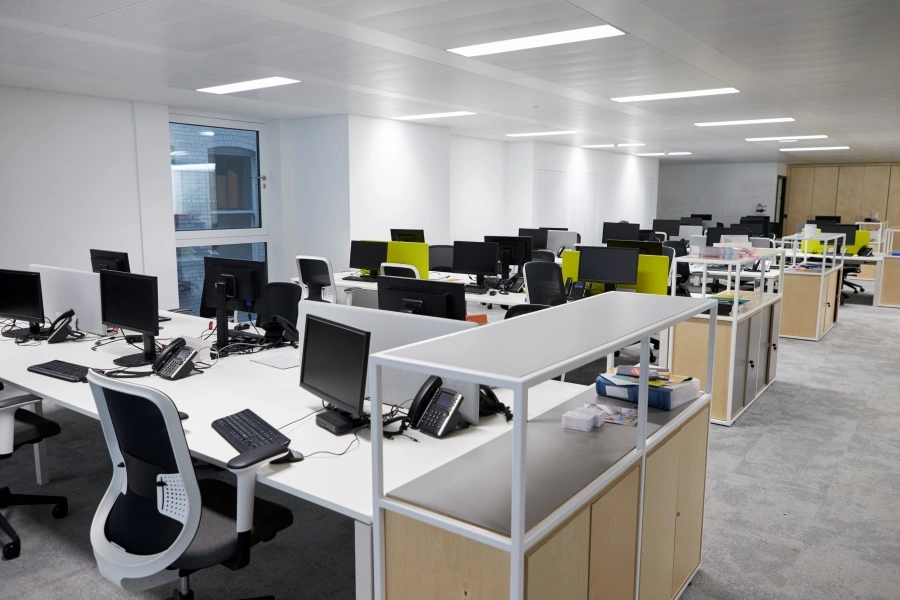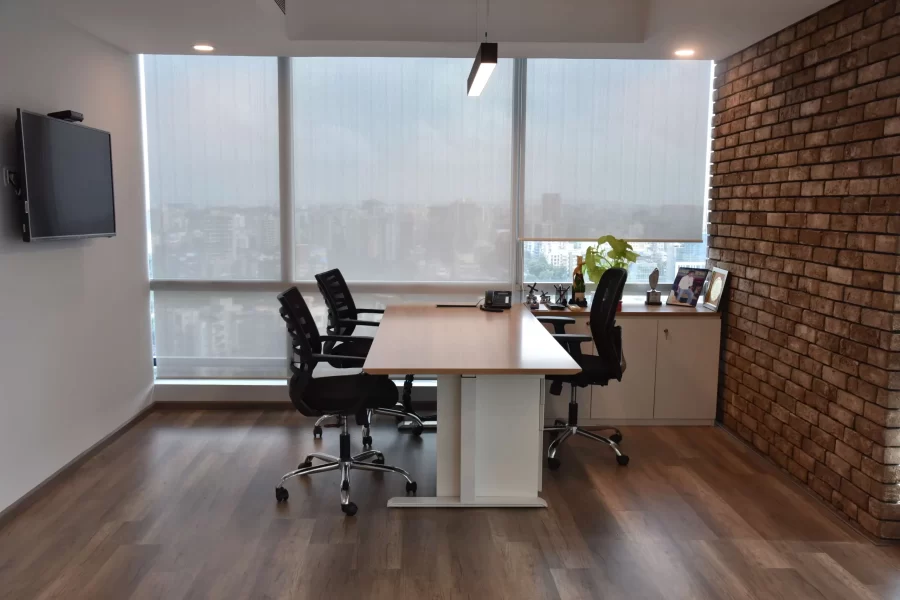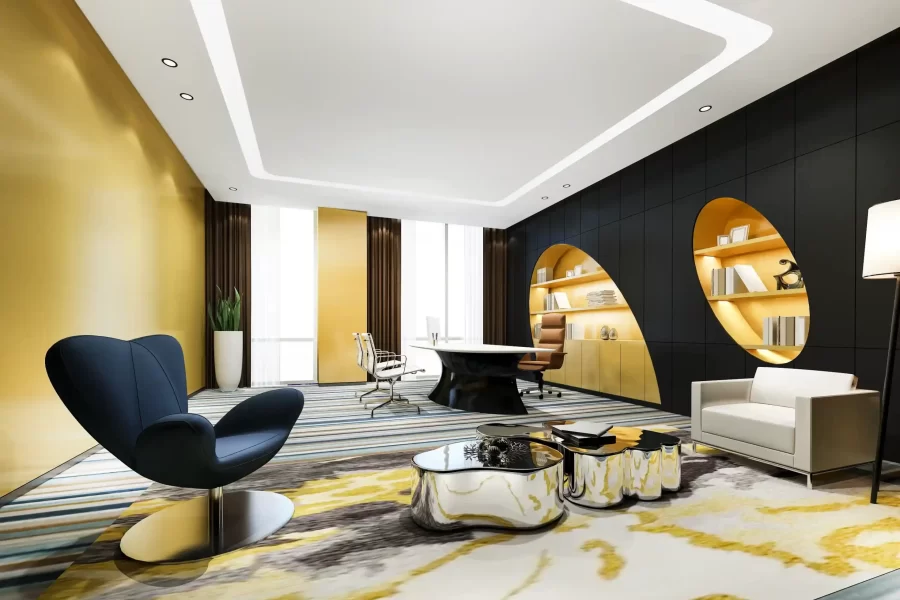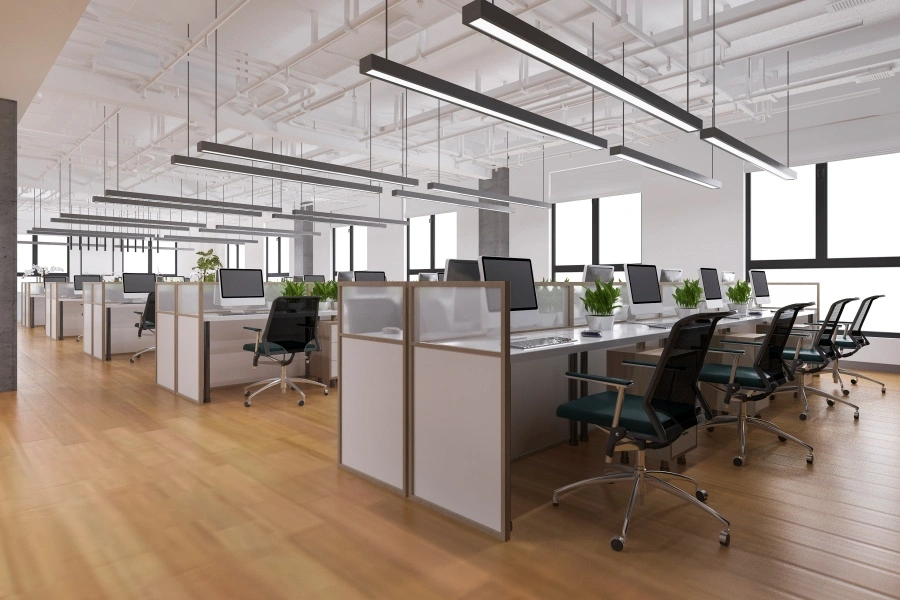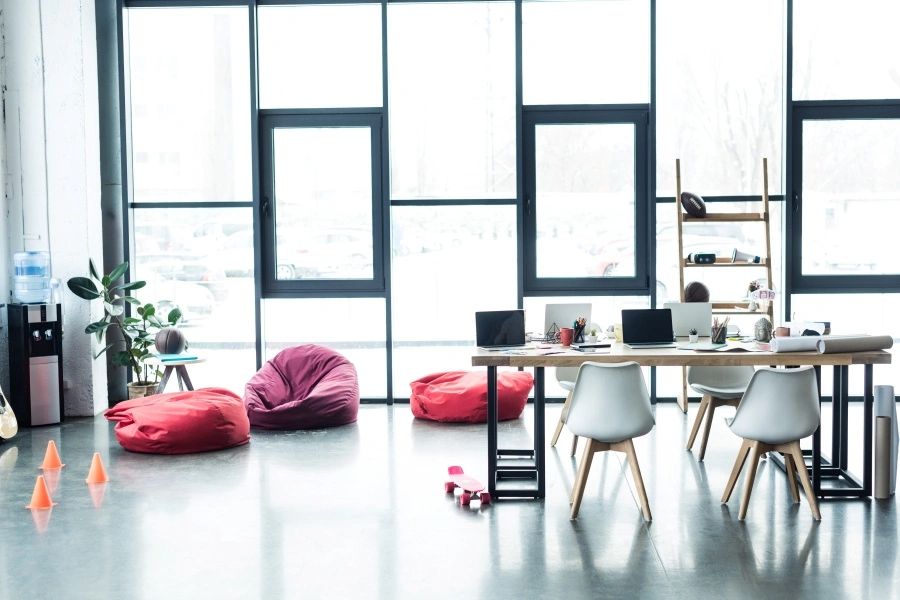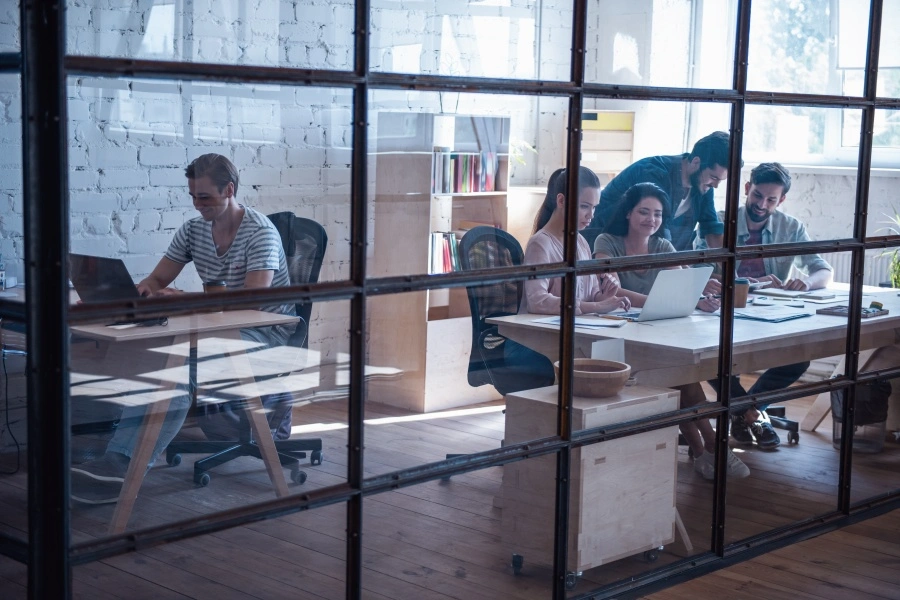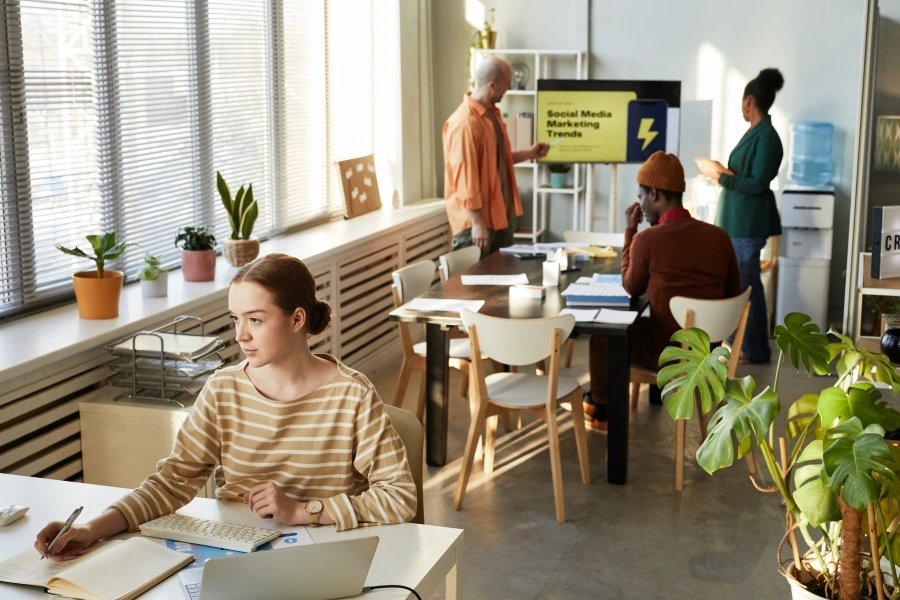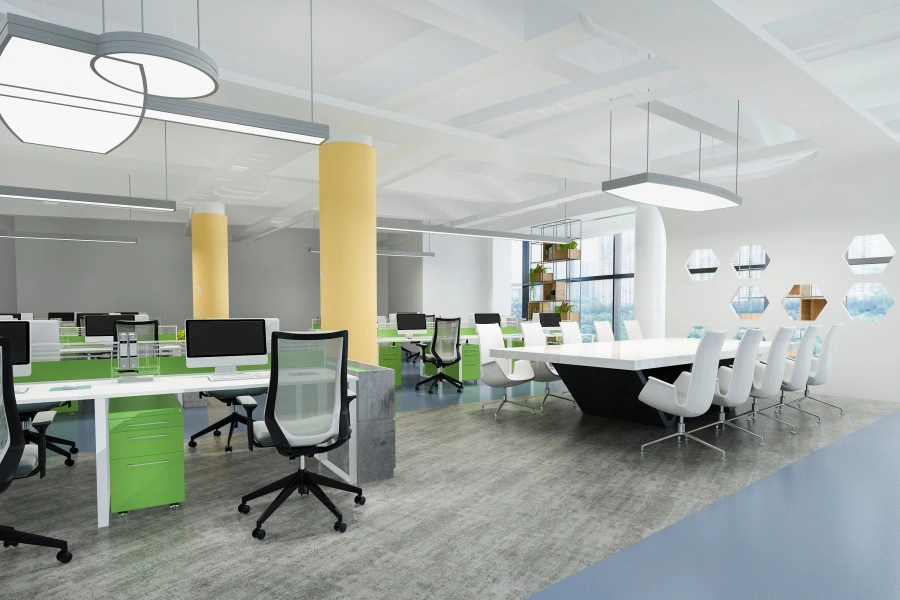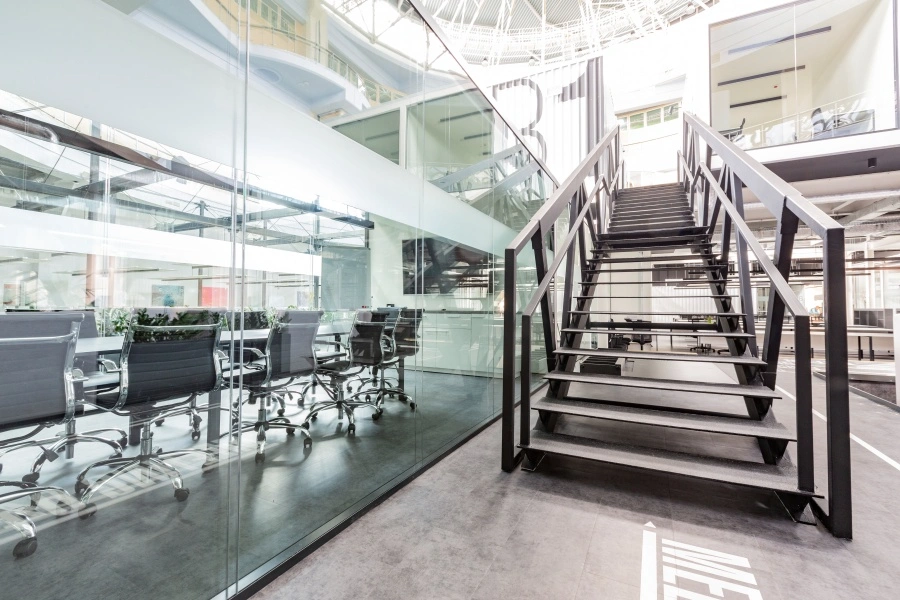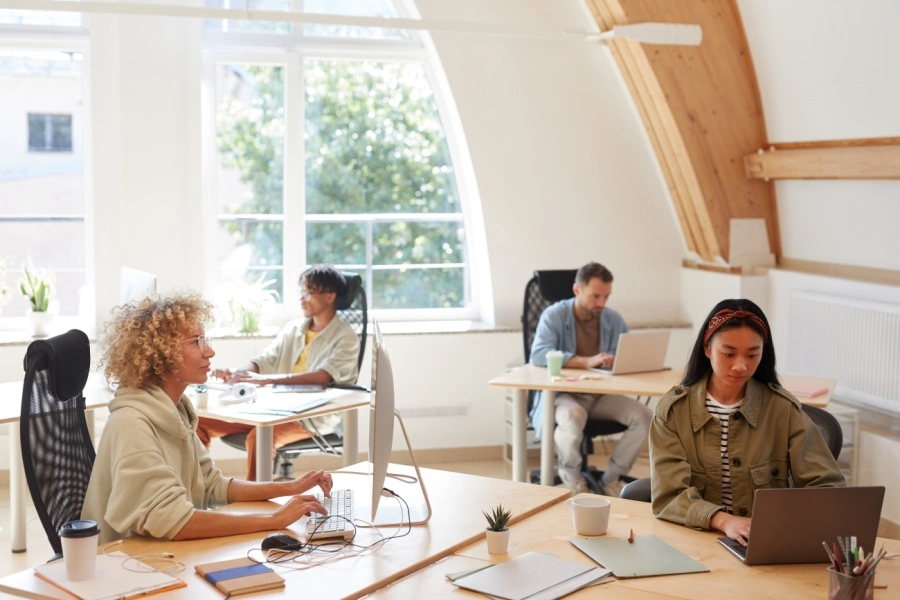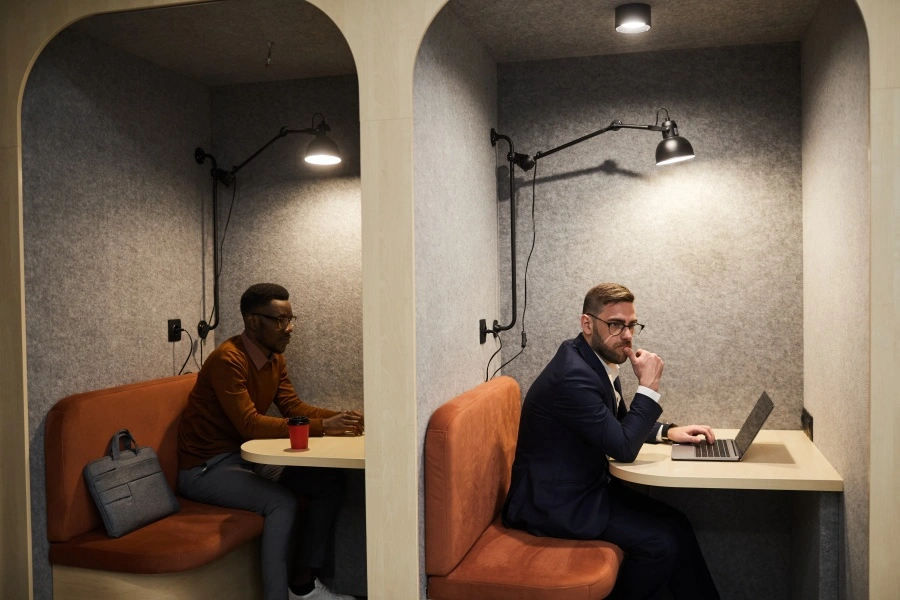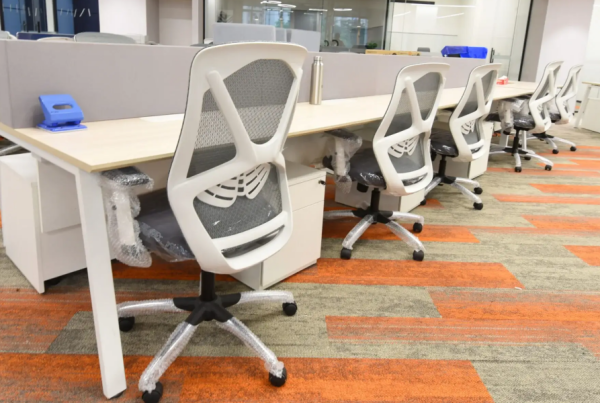Optimizing your workspace to improve productivity, comfort, and teamwork starts with smart office layout ideas. A well-thought-out office environment positively affects employee satisfaction and well-being while upgrading the process of everyday operations, team interactions, and completing tasks.
Let’s explore some practical office layout plans with trends and strategies tailored to maximize every inch of your workspace. Learn essential tips, discover innovative ideas, and uncover dos and don’ts while designing an office layout to create a space that works as hard as your team does.
Understanding Office Layout
What is Office Layout?
An office layout refers to the organized arrangement of workstations, furniture, and amenities- all of which are aimed at enhancing workflow, increasing productivity, and using the entire space efficiently. A strategic office layout plan focuses on functionality to develop a workspace that facilitates teamwork and individual tasks without any hurdles.
Importance of an Office Layout
A carefully planned office layout design promotes collaboration, contributes to staff’s contentment, improves their work-life balance and allows for smooth operations. It shapes a workspace that adapts to different work styles (on-site, hybrid, remote) while nurturing productivity and creativity, making sure employees thrive in their work environment.
8 Innovative Office Layout Ideas for Modern Corporates
1. Open-Plan Office
Suitable For – Creative teams, startups, and organizations that thrive on communication and collaboration.
Open office layout ideas emphasize shared spaces without barriers. Workstations are arranged in an open area to ease communication and teamwork between staff members. These office layouts work well for businesses prioritizing transparency and real-time collaboration. The inclusion of minimal partitions, ergonomic furniture and shared resources make an open-plan work environment adaptable and modern.
Pros–
- Encourages interaction.
- Improves space efficiency.
- Creates a lively atmosphere.
Cons–
- Noise and distractions can affect focus.
- The lack of privacy may not suit all employees.
2. Private Office
Suitable For – Professionals needing confidentiality, such as executives, lawyers, and consultants.
Private office layouts provide enclosed spaces for concentrated tasks or sensitive discussions. These rooms are designed for quiet work, with personalized layouts that suit the occupant’s preferences. They’re ideal for roles requiring focus or confidentiality.
Pros –
- Offers quiet and privacy.
- Minimizes interruptions
- Supports focussed work.
Cons –
- Consumes more space.
- Limits spontaneous collaboration.
3. Modular Office Layout
Suitable For – Dynamic businesses with fluctuating team sizes and project demands.
Modular office layout design ideas prioritize flexibility, using furniture and partitions that can be easily moved or reconfigured. This setup adapts to changing needs, making it perfect for businesses working on diverse projects or hosting temporary teams.
Pros –
- Adaptable and future-ready
- Efficient for varied tasks and team sizes.
Cons –
- Frequent reconfigurations can disrupt workflow and require careful coordination.
Co-working Office Layout
Suitable For – Freelancers, small startups, and remote workers looking for shared spaces.
Co-working office layouts are shared spaces designed for multiple teams or individuals. They include hot desks, private zones, meeting areas, and breakout zones where individuals or small teams work alongside others. It’s a cost-effective office setting that works great for networking, collaborating, and people working on flexible schedules, making it ideal for independent professionals and growing businesses.
Pros –
- Affordable.
- Flexible.
- Provides networking opportunities.
Cons –
- Shared spaces can limit privacy and create distractions.
5. Activity Based Workspace
Suitable For – Organizations with diverse teams, handling various tasks.
Activity-based workspaces divide offices into specific zones for tasks like quiet work, collaborative meetings, or informal breaks. This design caters to different work styles while offering employees the freedom to select a space that fits their needs at any moment.
Pros –
- Supports creativity.
- Minimizes monotony.
- Increases productivity.
Cons –
- Requires more space and planned zoning to function smoothly.
6. 10 x 12 Office Layout
Suitable For – New start-ups, freelancers, and solo entrepreneurs.
Small office layout ideas like a 10 x 12 setup focus on making the most of compact spaces. Ergonomic furniture, vertical storage, and minimalist decor create a productive environment while saving floor space. This layout suits professionals looking for a simple yet functional office.
Pros –
- Efficient and easy to maintain.
- Budget-friendly.
Cons –
- Limited collaboration areas and less room for growth.
7. Mezzanine Office Layout
Suitable For – Businesses needing additional workspace without expanding horizontally.
A mezzanine office layout adds a freestanding steel structure within the office, creating additional workspace above a specific area rather than the entire floor. These layouts are ideal for businesses needing to optimize vertical space, especially in industrial settings. Mezzanines can house offices, meeting rooms, or storage, keeping production and office operations close together without relocating or expanding horizontally.
Pros –
- Maximizes space.
- Looks visually impressive
- Reduces the need for external expansions.
Cons –
- Installation requires upfront investment and structural modifications.
8. Hybrid Office Layout
Suitable For – Companies supporting both in-office and remote work models.
Hybrid office layouts are designed by combining features from both open-plan and private offices to cater to in-office and remote employees. They include collaboration areas, quiet zones, Zoom booths, and hot desks. The tech-integration in these workplaces are done at a top-notch level to facilitate smooth coordination between remote and on-site teams.
Pros –
- Facilitates various work styles.
- Adjusts to different work modes.
Cons –
- Technology requirements and planning can add to setup costs.
How to Choose the Right Office Layout
Assess Business Goals and Culture
The correct office layout should align with the company’s objectives and work culture. A collaborative workplace benefits from open layouts, while businesses keen on privacy may prefer segmented designs. Understanding how the office represents the company’s values helps guide the choice of an office layout plan.
Consider Employee Preferences
Employee input is valuable when designing an office layout. Feedback on privacy requirements, shared spaces, and ergonomic needs creates a workspace that assists staff’s productivity and well-being. A setup tailored to employee comfort channels a positive work environment.
Space and Budget Constraints
Analyzing available space and financial resources helps in narrowing down office design layout ideas. Systematically planned layouts make the most of small spaces, while modular solutions fit both larger offices and limited budgets.
Future Growth Planning
Planning for business growth is important when finalizing an office layout. Flexible designs, like modular or hybrid layouts, can adapt to growing team sizes and needs, which makes it easier to expand without disrupting workflow.
4 Key Trends in Modern Office Layouts
Flexible and Hybrid Workspaces
Flexibility defines modern office layout ideas. Workspaces now cater to hybrid models with features like hot-desking, shared zones, and adjustable seating. These designs adapt to fluctuating team sizes, creating an environment that fuses in-office and remote work.
Tech-integrated Office
Office space layout ideas now prioritize technology integration. From built-in charging stations to interactive screens and advanced collaboration tools, tech-enabled spaces facilitate smooth communication and productivity. These layouts are essential for teams that rely on seamless digital connectivity.
Sustainable and Eco-friendly Design
Sustainability has now become the core of most modern office design. Businesses are coming forward to use recyclable materials, energy-efficient lighting, and modular furnishings to create eco-conscious work environments that lowers their carbon footprint. Green accents like indoor plants and natural textures like stone or wooden work add warmth to this design concept supporting environmental goals.
Wellness-centric Layouts
Wellness is at the heart of office design layout ideas today. Quiet zones for mental focus, ergonomic furniture to reduce strain, and an abundance of natural light create environments that support employees’ physical and mental health while boosting productivity.
Essential Considerations for Office Layout Design
- Design for adaptability: Flexible office space design should support the business and team’s changing needs, with modular office furniture and adjustable layouts for diverse work styles.
- Prioritize natural light: Position workstations to maximize daylight and include noise-dampening (acoustics) solutions or designated quiet zones for better focus and comfort.
- Make inclusivity a priority: An effective office layout plan integrates wide pathways, adjustable desks, and well-drafted areas to assist in flexible working styles.
- Incorporate ergonomics and health-oriented furniture: Ergonomic executive chairs and adjustable desks are amazing for reducing physical strain. Again, sofas and lounges or wellness areas in the office layout design encourage relaxation and recharge.
- Space matters: Avoid cramped setups. Create easy-to-adaptive workspaces that facilitate easy movement around the area and don’t compromise on comfort.
- Organize for productivity: Smart storage options keep desks tidy, helping employees stay focused and making the office layout ideas practical and efficient.
Enrich Your Office Layout with Vlite’s Office Furniture Solutions
Building an office layout that aids productivity, collaboration, and employee well-being begins with understanding your business needs and long-term vision. Vlite Furnitech offers a range of customized furniture solutions, from sleek minimalist designs to luxurious setups to furnish and elevate the aesthetics and functionality of both traditional vs. modern offices.
Our expert designers have created office furniture design guides to help you achieve a workspace that inspires and adapts, whatever your needs. Explore how our office furniture solutions can bring your vision to life. Contact us today!
FAQs
What are some practical office layout ideas for small spaces?
Some practical office layout ideas for small spaces include maximizing natural light, using vertical storage solutions, compact desks, and organizing with smart cable management and desk organizers. An open-plan setup or a stylish feature wall can add some pop to the setup.
How do I create an effective office layout plan?
To create a constructive office layout plan, focus on ergonomic furniture, collaborative spaces, ample natural light, and seamless technology integration, complemented by indoor plants and smart storage systems for a flexible and uplifting workspace.
Are there any 10 x 12 office layout ideas for maximizing productivity?
For a 10×12 office layout, place the desk at the center to free up wall space for built-in shelves or cabinets, increasing storage and creating a productive, mess-free environment.
How to approach an office layout design for corporates that enhances collaboration?
An effective office layout design for corporations should feature open-plan setups, team tables, and collaborative spaces like lounges or conference rooms, supported by integrated technology and biophilic elements.

